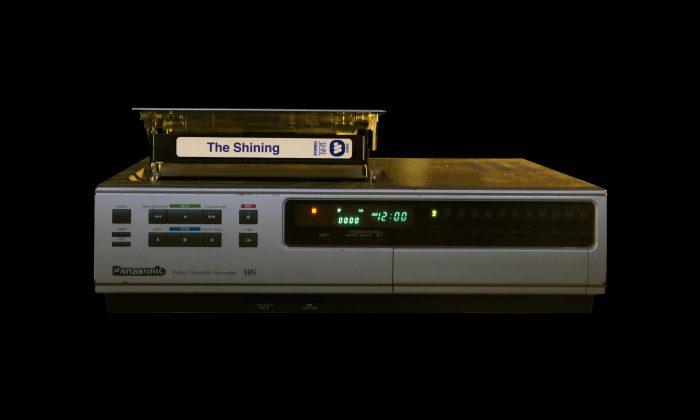Most of the way through Rodney Ascher’s documentary, “Room 237,” we see a car wreck on a snow-drenched highway. A red Volkswagen has been crushed by an eighteen-wheel delivery truck as the character Mr. Halloran, of Stanley Kubrick’s “The Shining” (1980), drives past. The shot is almost completely innocuous, unless you are watching Ascher’s version.
In this one shot, Kubrick’s film, Stephen King’s novel of the same name, and Ascher’s “Room 237” all come to a single point and reveal the nature of artistic intent. The red VW is an allusion to King’s novel, in which the Torrance family drives one to The Overlook Hotel. Yet in Kubrick’s film, they drive a yellow VW. The voice-over explains that this is an emphatic denial of King’s version, one that is acknowledged but then tossed aside.
And so goes the documentary, showing the various ways in which this single story has been consumed, fragmented, separated, and pieced back together by loyal fans. It is a story in nine parts, with different interpretations of one of the most enigmatic films of the late 20th century.
Both “Room 237” and “The Shining” have been shown back-to-back at the Bloor Cinema and the Tiff Lightbox this month in Toronto. This allowed viewers to listen to “237’s” sometime bizarre interpretations (like one contributor’s theory that the film is an expression of guilt on the part of Kubrick over his involvement in the faking of the Moon landing footage in 1969—more on this later)and then judge for themselves by viewing “The Shining” immediately afterward.
Fans of Kubrick’s 1980 film show how they have, like Kubrick himself, blurred the lines of artistic ownership of material by adding new meaning to a widely beloved, yet controversial film.
One chapter posits that “The Shining” represents the shame and tragedy of the killing of innumerable Native Americans by European settlers. Another is more personal to Kubrick—the fake moon landing—which, while it requires quite a stretch of the imagination, provides some entertaining, if not compelling evidence.
One fan goes so far as to suggest that “The Shining” includes several nods to the Holocaust, including the repetition of the number 42, as in 1942, the year Hitler began his categorical killings. The product of 2 x 3 x 7 is 42, as this fan points out.
While some of the interpretations are unpalatable or off-putting, the viewer should understand that the common denominator here is an appreciation for the care with which Kubrick made the film. Contributors are aware of some of their own absurdities, admitting that eventually the dogged pursuit is a dead-end or can even take over one’s life.
While “Room 237” is unique in documenting a film’s fans rather than its contents, it is a satisfying companion piece for loyalists. It does not remove viewers from the already established environment of “The Shining,” with the soundtrack, pacing, and tone making one feel as though they are once again inhabiting Kubrick’s Overlook Hotel.
Ascher is very clever in using excerpts from other Kubrick films to illustrate points being made by the contributors who do not appear on screen. Particularly, “Eyes Wide Shut” is used for this purpose. While one fan talks of feeling watched by the U.S. government for identifying the moon landing film as a hoax, Tom Cruise’s character is shown being followed by a dark-suited agent. When assertions or suggestions of meaning are made, the director guides the viewer by synchronizing with suggestive footage. When it is suggested that Danny Torrance is perhaps unconsciously killing his father, the scene of him throwing darts with red tips is shown, with Danny looking meditative and business-like in his play.
“Room 237” aims to show the metamorphosis that a beloved film and its fans go through after years of being in the public sphere and succeeds in raising more questions than providing answers, thereby placing the discussion of a densely coded film into the minds of a new generation of film buffs.
As it is stated by one person in the film, the act of “Shining” is like watching a movie. It is a dream-like liminal space in which the viewer decodes daily experiences and attaches meaning through narrative and action. Danny is able to successfully navigate the pitfalls of the hotel because he is tuned in to the situation, able to understand the past and the dangers of repeating history.
Watching “Room 237” is like dreaming about “The Shining,” revisiting it in order to fully understand its many corridors. Or at least to re-live the nightmare again.
Joe Pack is a film and sportswriter living in Toronto. He blogs at upperbodyinquiry.com. Follow him on Twitter @JoePack





Friends Read Free